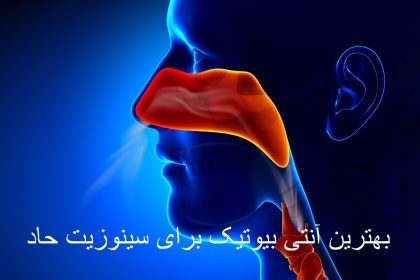Is exercise useful and effective for polycystic ovary syndrome? What is the relationship between exercise and ovarian cysts? Polycystic ovary syndrome or PCOS is a hormonal disorder that occurs in reproductive age and causes irregular or stopped menstruation. This issue also causes other problems.
In this article, we discuss the symptoms and causes of this syndrome and introduce the best exercise for polycystic ovary syndrome.
Familiarity with polycystic ovary syndrome (PCOS)
PCOS is a hormonal disorder that, if you have it, your periods may become completely irregular or even stop altogether. This syndrome can make it difficult to get pregnant, usually by not ovulating. In addition, your androgen (a male hormone) may be abnormally high. This hormone can cause symptoms such as excessive hair growth, pimples and acne, obesity, menstrual irregularity, hair loss and anxiety.
What causes PCOS?
The exact cause of PCOS is unknown. But researchers believe that a combination of genetic and environmental factors play a role in causing this disorder. About 8 to 13 percent of women in the world are involved with this syndrome; So don’t feel alone if you have this disease.
How is polycystic ovary syndrome treated?
PCOS is a chronic disease and cannot be cured. However, some symptoms can be improved through lifestyle changes and appropriate medication. Fortunately, many of the symptoms of PCOS can be alleviated with lifestyle changes. Eating a healthy diet and getting enough exercise can help you lose weight and reduce your risk of developing type 2 diabetes.
In general, treatment for PCOS infertility involves lifestyle changes, medications, or surgery to stimulate regular ovulation. But the good news is that exercise is a very good treatment for polycystic ovary syndrome and you can benefit from the benefits of exercise for ovarian laziness in this disease.
Can I treat PCOS with exercise?
We all need an exercise routine; But women with PCOS need regular exercise more than other people. Because of insulin resistance, women with PCOS are more likely to become obese and develop diabetes, and weight loss can be challenging for them.
Inactivity and high weight are always related and both may cause insulin resistance. Therefore, you can lose weight with a suitable and personalized sports nutrition plan. Exercise also helps regulate your hormones and lower your testosterone levels, which is another benefit of exercise. This will reduce the symptoms of PCOS including acne and hair growth. In the following, we will talk about the benefits of exercise for polycystic ovary syndrome.
Increases insulin sensitivity
Research has shown that regular cardio and strength training can help your body respond better to insulin and reduce your risk of diabetes and other complications. This issue is very important for those suffering from ovarian laziness.
It reduces cholesterol
Women with PCOS are more likely to have high cholesterol and triglycerides. This condition can lead to other complications such as metabolic syndrome, which is more common in women with PCOS. If exercise is done along with a healthy and low-fat diet, it will definitely help to reduce your cholesterol.
It increases the release of endorphins and happy hormones
Depression symptoms are more likely to occur in women with PCOS. When you exercise, your body releases endorphins, which are hormones of happiness and health! Exercise can help you manage stress and reduce some symptoms of depression by increasing the release of happy hormones.

It improves the quality of your sleep
Who does not need quality and better sleep?! Regular exercise can help you fall asleep faster and have better quality sleep. Women with polycystic ovary syndrome are more likely to suffer from sleep apnea, snoring and even insomnia. Exercise will definitely help you sleep better at night. Keep in mind that it may take a few days or weeks to see results.
It reduces the risk of heart diseases
Heart disease is the number one killer of women, and women with PCOS are at increased risk for atherosclerosis, high blood pressure, and high cholesterol. But exercise, especially cardio exercises, reduces this risk. Therefore, one of the most important benefits of exercise for polycystic ovary syndrome can be this issue.
Regulates hormones
Women with PCOS have an imbalance in their reproductive hormones, but the imbalance of these hormones even leads to disrupting the balance of other hormones in the body such as insulin, cortisol, endorphins and other hormones. What you can do is exercise to help regulate your hormones by burning excess fat. Decreasing excess fat stores can help control your hormones as well as reduce PCOS symptoms.
It reduces weight
Weight loss is one of the most common reasons women come to exercise. When you have PCOS, trying to lose weight can be difficult and sometimes frustrating. But you can lose weight by doing your favorite sports and combining it with a healthy diet. Be sure that choosing exercise for polycystic ovary syndrome is very wise and correct.

The most useful exercises for polycystic ovary syndrome
Any type of sport that you are interested in and can regularly include in your life; A great and useful sport for you. But a series of exercises can be more useful for improving general health and helping to treat this disease. We suggest that you exercise at least 30 minutes a day to treat PCOS. Below we introduce the best exercises for ovarian laziness.
1. walking
Most people don’t realize how efficient and beneficial walking can be. One of the easiest and healthiest ways to move your body and improve your general health is walking. Because it is free and has almost no adverse side effects.
Walking can give women with PCOS a happier life by reducing stress hormones, reducing inflammation, and increasing endorphins (happy hormones). Research shows that walking, especially after meals, can help lower blood sugar levels by increasing insulin sensitivity and is one of the best choices for treating ovarian laziness with exercise.
2. cardio
Running, swimming, hill walking, rowing, and cycling are examples of cardio exercises that increase the heart rate. Cardio exercises are performed in different intensities and you choose the level of your cardio exercise according to your physical fitness. Increasing cholesterol levels, improving brain function, blood sugar control, sleep quality and mood are some of the benefits of cardio exercises that a woman with ovarian laziness needs.
3. Strength training
In strength training, you should train with weights, resistance bands, or your own body weight. These exercises focus on muscle growth and increasing their strength and endurance. The many benefits of strength training include improving blood pressure, lowering blood pressure, supporting metabolic function, and stronger bones.

4. yoga
Women with PCOS often have a stronger reaction to stress and anxiety. Yoga, pilates, and tai chi are examples of mind-body exercises that can not only burn calories, but also reduce stress levels, which can be effective in improving PCOS symptoms. Therefore, do not neglect this type of exercise for polycystic ovary syndrome.
According to a small study of women with PCOS, patients who practiced yoga for one hour three times a week experienced significant reductions in free testosterone and DHEA levels, as well as improvements in anxiety, sadness, and improved menstrual cycles. They observed that it is very good news for these patients.
5. Heat or intermittent high intensity exercises
High-intensity interval training, or HIIT, consists of short periods of cardio activity performed at a very high intensity, followed by at least one minute of active rest. HIIT helps burn fat and reduce insulin resistance. It also has after burn properties; A property that makes your body continue to burn fat even after exercise.
How much time a day should I exercise to treat polycystic ovary syndrome?
You don’t need hours of exercise a week to improve PCOS! Studies have shown that 30 minutes of physical activity per day, or at least every other day, significantly improves metabolic and reproductive symptoms associated with PCOS.
Note that your exercise does not need to be very hard and heavy, but even a light yoga or pilates session is a valuable and useful physical activity to improve the symptoms of polycystic ovary that should not be neglected.
final word
PCOS is a hormonal disorder that causes irregular periods and other physical and mental problems as a result. One of the best ways to improve and treat this syndrome is to exercise regularly. In this article, we talked about exercise for polycystic ovary syndrome and introduced the best exercises for its treatment.
References: verywellhealth – asterdmhealthcare
RCO NEWS
RCO


















